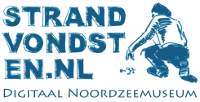Nitophyllum stellatocorticatum Okamura, 1932
 Stippeltjeswier
Stippeltjeswier  - Biota - Plantae - Biliphyta - Rhodophyta - Eurhodophytina - Florideophyceae - Rhodymeniophycidae - Ceramiales - Delesseriaceae - Nitophylloideae - Nitophylleae - Nitophyllum
- Biota - Plantae - Biliphyta - Rhodophyta - Eurhodophytina - Florideophyceae - Rhodymeniophycidae - Ceramiales - Delesseriaceae - Nitophylloideae - Nitophylleae - NitophyllumDe voortplantingsorganen liggen verspreid over het blad wat het wier zijn naam heeft gegeven
| Lengte | : | ≤30 cm 1 |
| Kleur | : | lichtroze tot roze 1 |
| Hechtorgaan | : | ja 2 |
| Beschrijving | : | cirkelvormig 2 |
| Thallus | : | ja |
| Dikte | : | 1 cellaag 1 |
| Nerf | : | nee |
VertakkingBij de hydropoliepen bekent als hydroclaudia | : | ja |
| Beschrijving | : | onregelmatig vertakt 1 |
| Geslachtsorganen | : | ja |
| Locatie | : | Verspreid over het blad 1 |
| Man | : | bleke ovaal op een rij 3 |
| Vrouw | : | donkerrode 3 |
| Vruchtlichaam | : | ja 4 |
| Tetrasporen | : | ja 4 |
| Beschrijving | : | Door meiose wordt in de tetrasporofytische (diploïde) fase tetrasporen gevormd. Na de meiose ontstaan er 4 sporen die te verdelen zijn in 3 soorten: kruisvormig, zonaat en tetraëdrisch 4 |
| Cellen | : | ja 4 |
| Chloroplast | : | ja 4 |
| Chlorofyl a | : | ja 4 |
| Phycoerythrin | : | ja 4 |
| Phycocyanin | : | ja 4 |
| Exoot | : | ja |
| Herkomst | : | Grote Oceaan 5 |
GeslachtHermafrodiet of geslachtelijke voortplanting, zie ook geslachtsorganen | : | mannelijk of vrouwelijk; reproductie door verschillende type sporen 2 |
| Bronnen | : |
